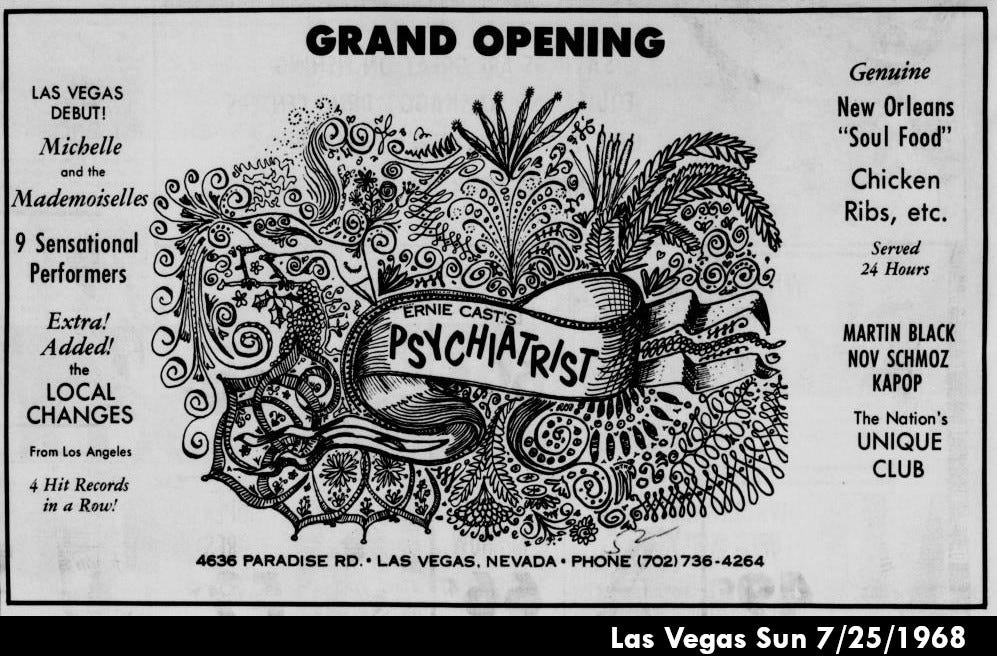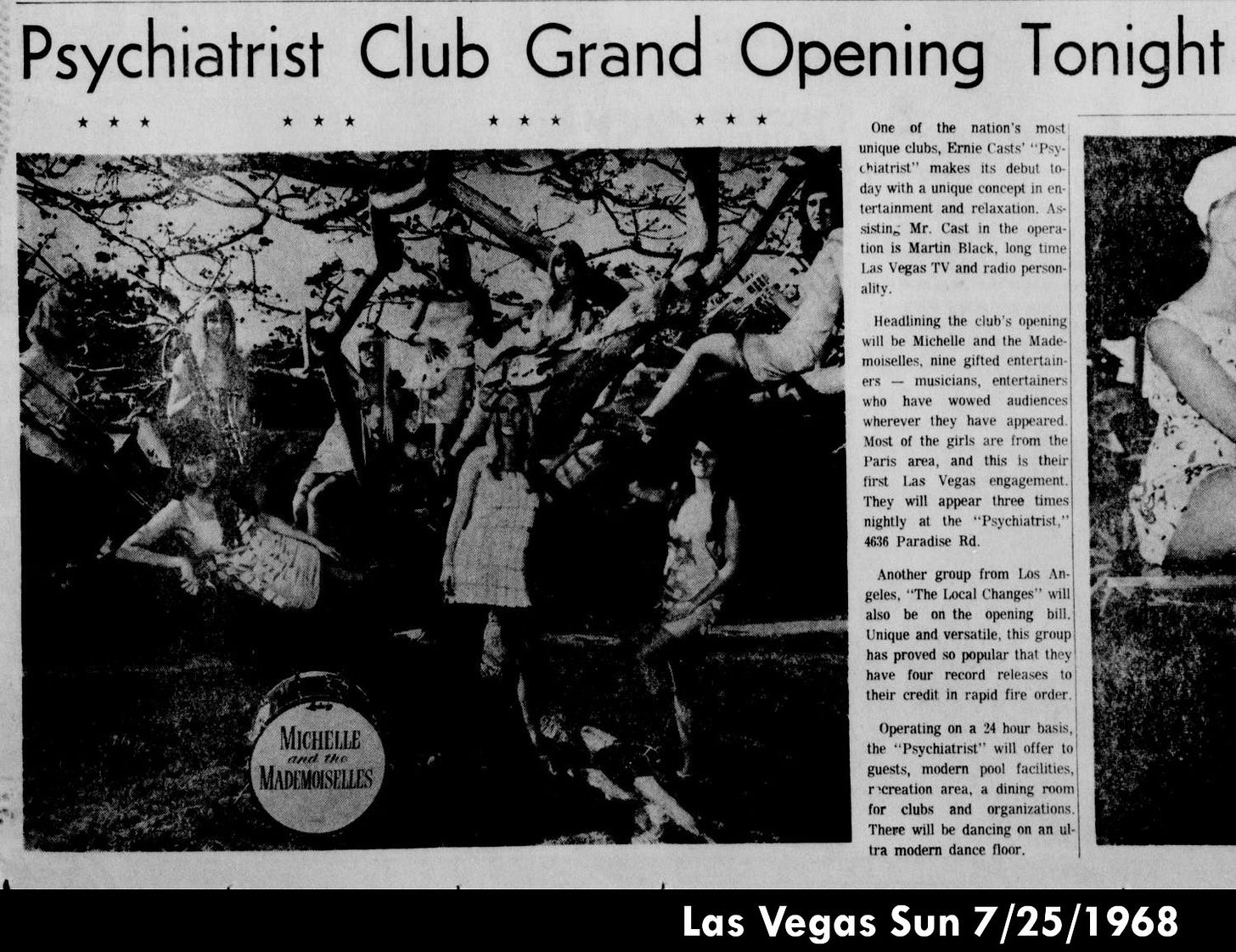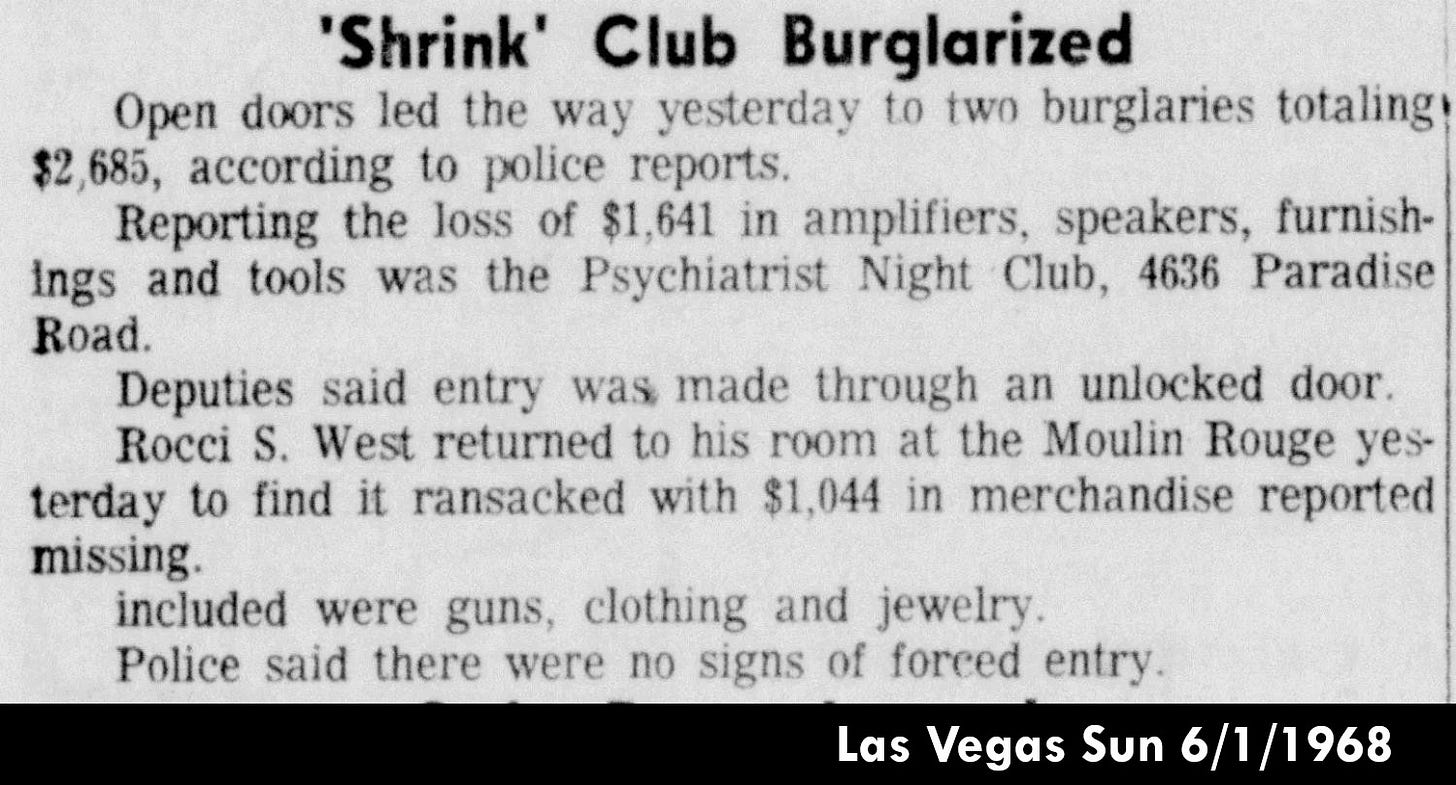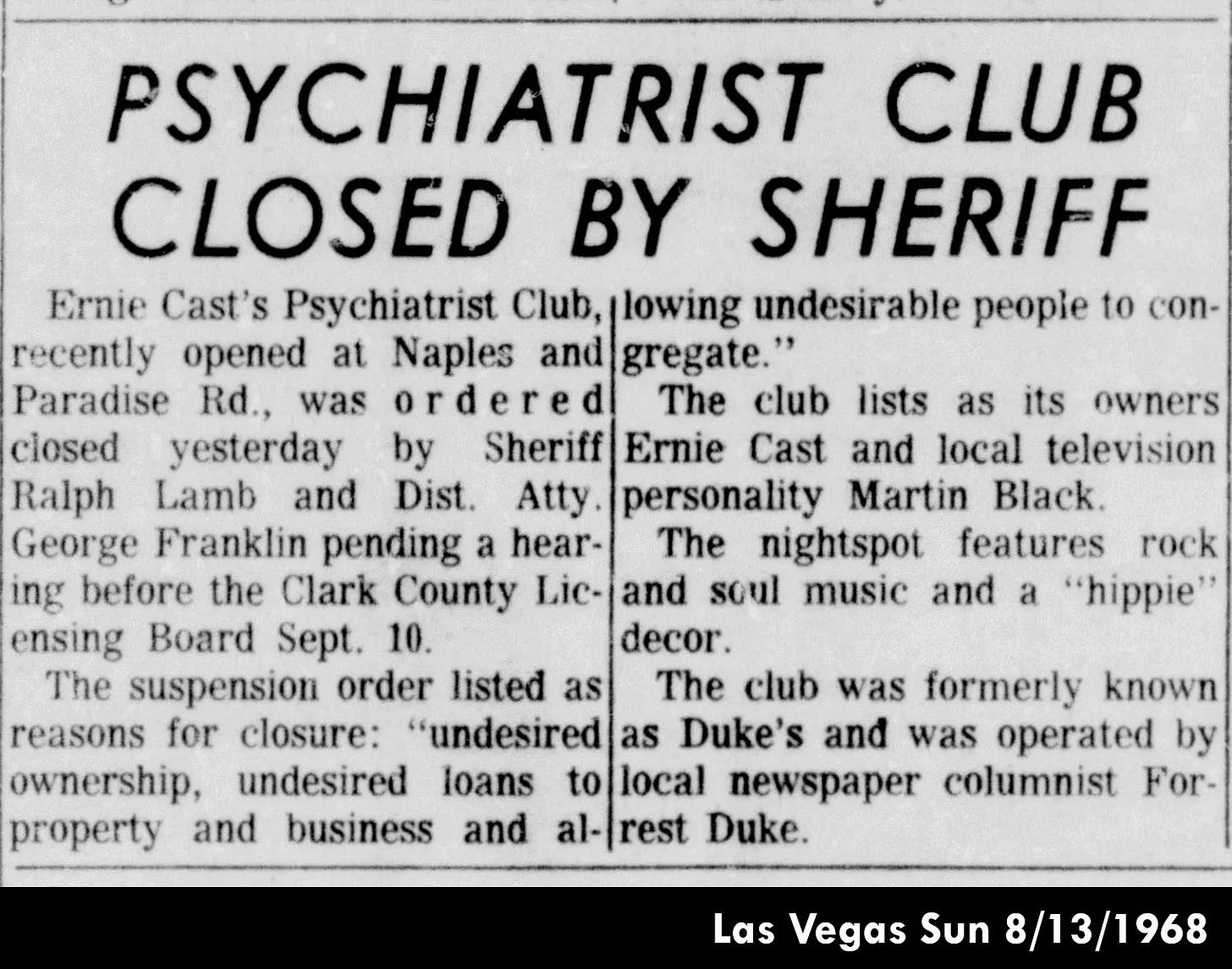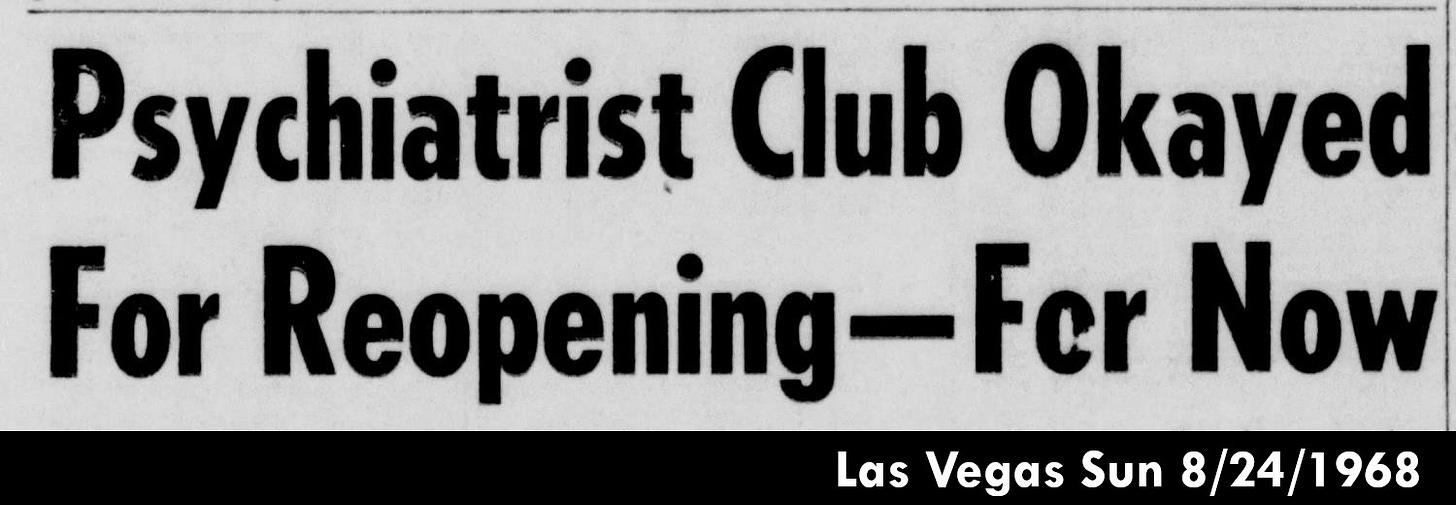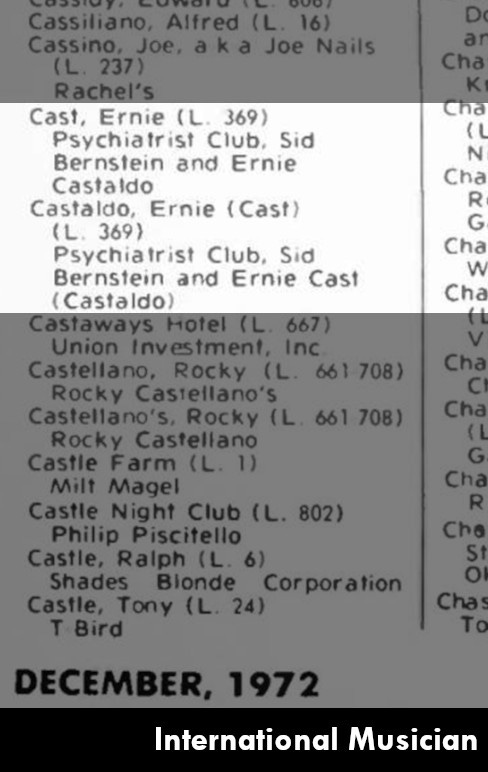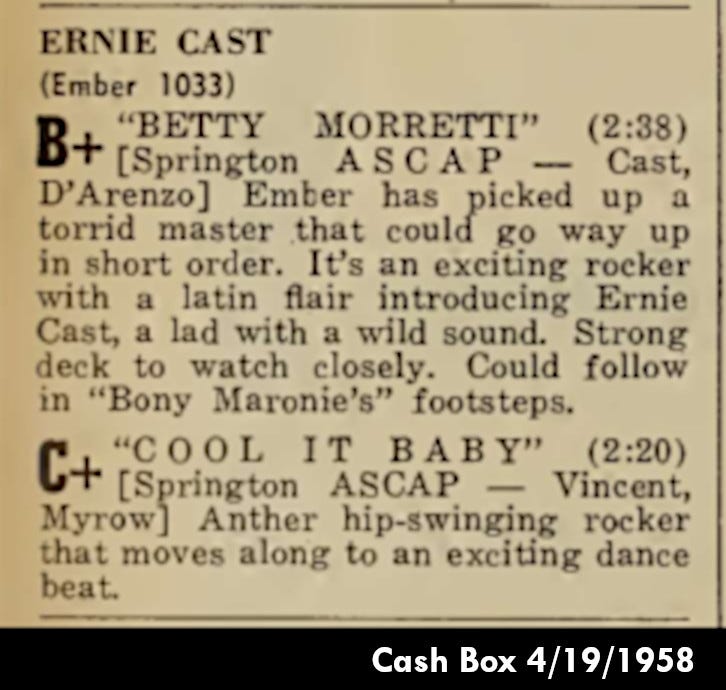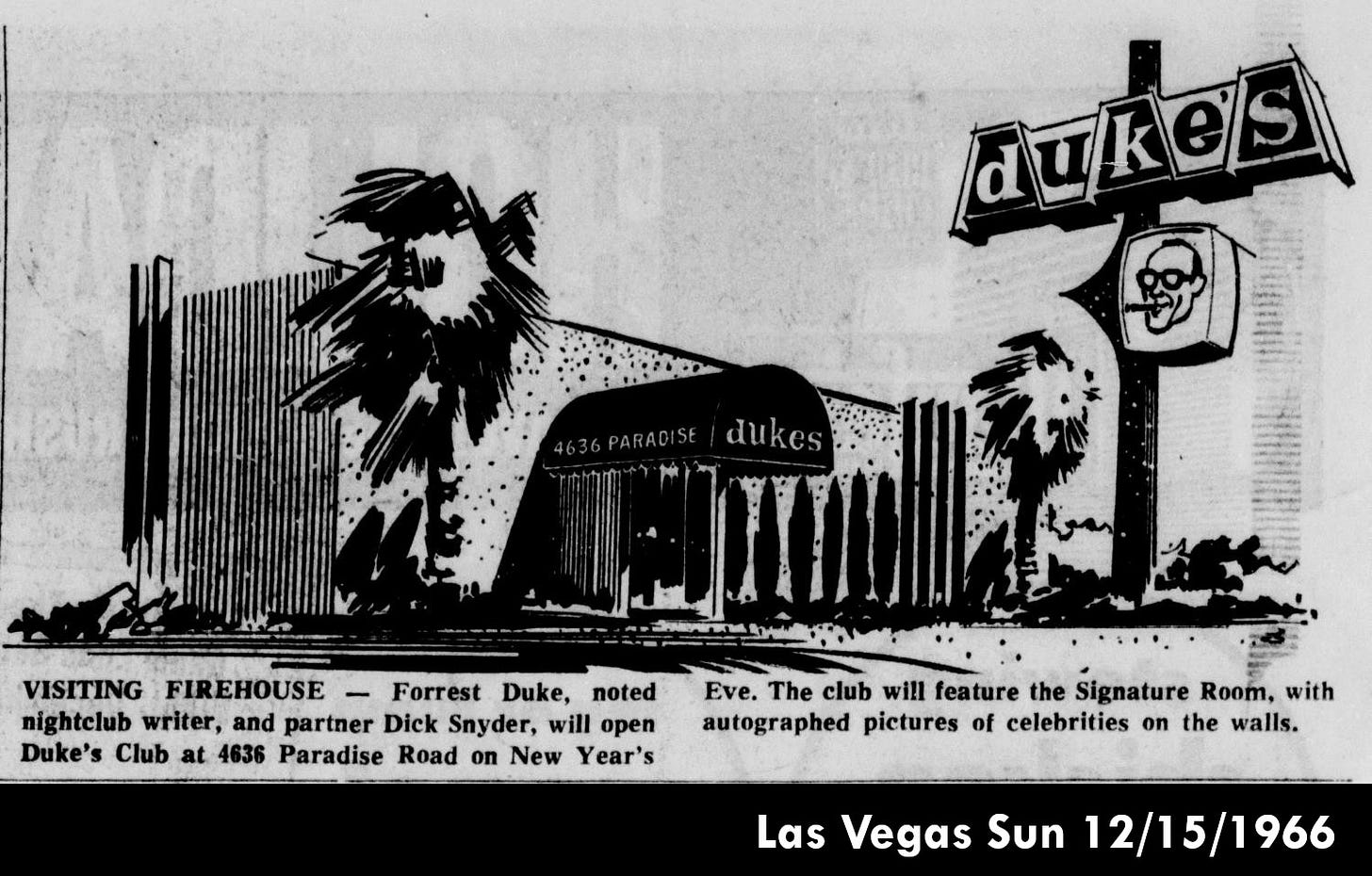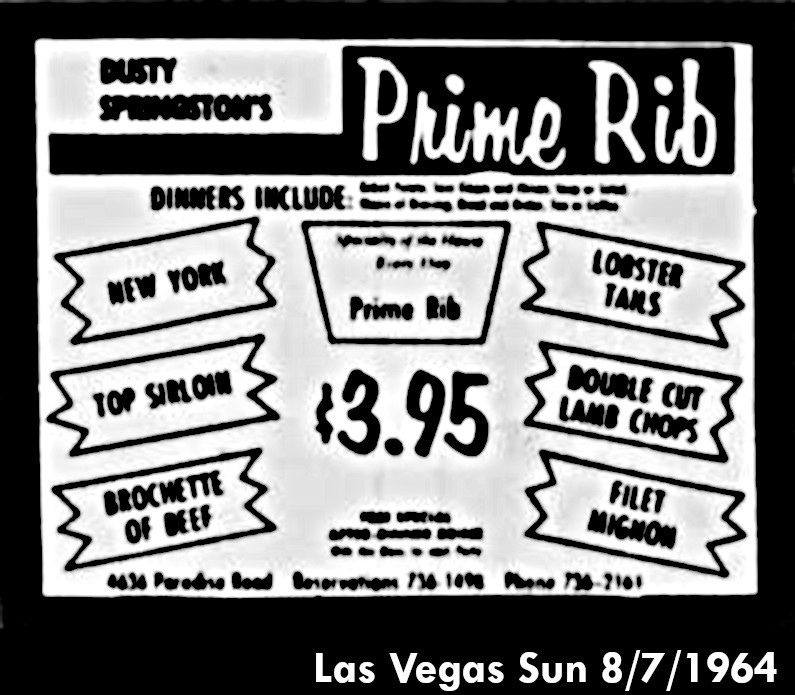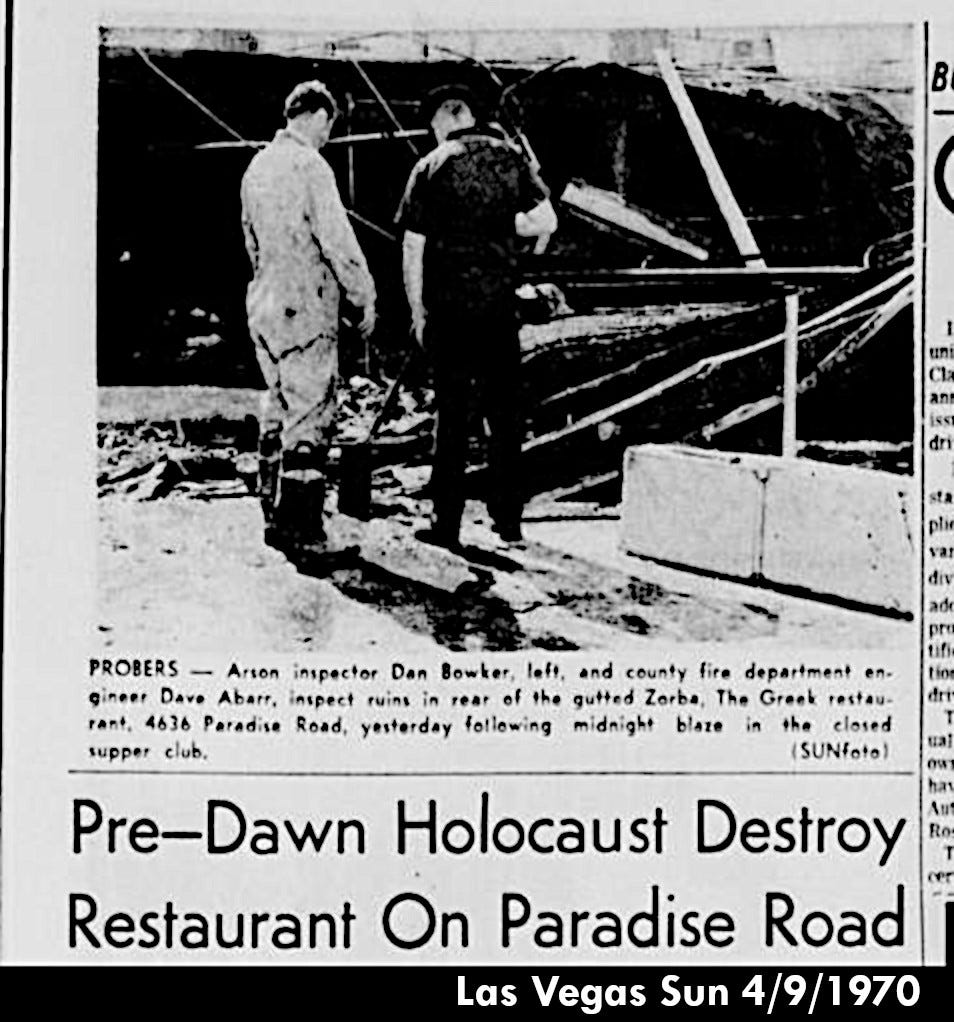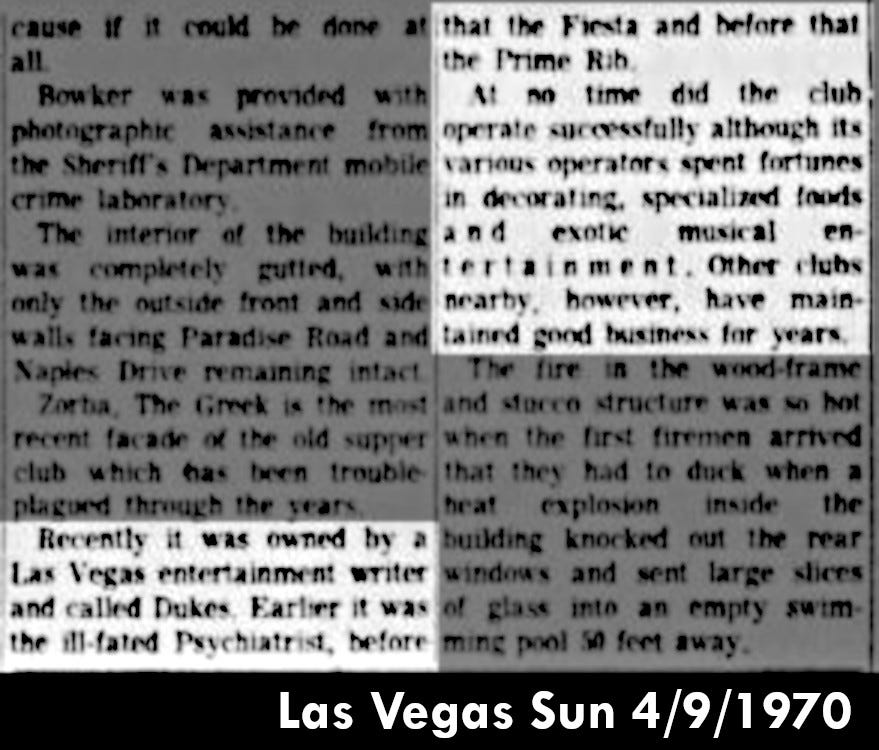There are worse ways to spend your life than chasing the American dream. But once you've found it, like I did in Vegas, what's called the old Psychiatrist's Club, then it is kind of puzzling. You feel kind of naked and alone out there, because once you've found the dream, it is generally just a slab of burned-out concrete in Las Vegas called the old Psychiatrist's Club, then it's kind of hard to go on from there on the same.
Hunter S. Thompson, November 1, 1977, Lecture at the University of Colorado (Boulder)
Hunter S. Thompson chronicled the search for the American Dream in his 1971 novel, Fear and Loathing in Las Vegas. Near the end of the book, Thompson, or Raoul Duke, has broken down completely, leaving chapter nine reduced to a transcription of the original tape recording. In the passage, Duke and his Attorney’s search takes them to a diner in North Las Vegas where they learn that the American Dream is in fact a discotheque once called the old Psychiatrist’s Club.
Waitress: Five tacos, one taco burger. Do you know where the American Dream is?
Lou: What’s that? What is it?
Att'y: Well, we don't know, we were sent out here from San Francisco to look for the American Dream, by a magazine to cover it.
Lou: Oh, you mean a place.
Att'y: A place called the American Dream.
Lou: Is that the old Psychiatrist's Club?
Waitress: I think so.
Att'y: The old Psychiatrist's Club?
Lou: Old Psychiatrist's Club, it's on Paradise... Are you guys serious?
Lou, the cook, can’t recollect if the place was ever called “The American Dream,” but warns that the place is not for tourists. It’s a place for “pushers, peddlers, uppers and downers,” where “all the kids are potted when they go in.” Undeterred, Duke and Dr. Gonzo seek out the club. When they locate what was the “Old Psychiatrist’s Club,” all they find is slab of scorched concrete in a vacant lot. They are told by the owner of the gas station across the street that the place burned down three years prior.
The Old Psychiatrist’s Club and its demise can be read as emblematic of the illusory nature of the American Dream, but not only was the club a real place, its own star-crossed existence was a journey into the heart of the American Dream.
The Psychiatrist, as it was called, began operation in July 1968. The Las Vegas Sun reported on the club’s grand opening, describing it as “one of the nation’s most unique clubs.” The club’s headlining act was Michelle and the Mademoiselles, a popular French club act at the time. The new club would be open 24 hours a day and boasted “modern pool facilities, recreation area,” and, of course, an “ultra modern” dance floor. Within a few days, the Sun would report that the club was off to a “flying start.”
In reality, the club faced trouble from the start. Weeks before opening, the club had its sound equipment, furnishings, and tools stolen in a burglary.
Once open, things soon spiraled out of control. In less than a month, the club was closed by the Sheriff for “undesired ownership” and “allowing undesirable people to congregate.” The county also alleged possible “hidden owners” were running the club.
Club owner Ernie Cast fought back, suing Clark County arguing the county ordinance was unconstitutional. Despite an initial ruling in his favor, the Psychiatrist ultimately closed within a month of its grand opening.
Long after going out of business, Cast and his club would continue to appear on the list of defaulters published by the American Federation of Musicians. Even Cast’s name was an illusion, shown as Castaldo on the union’s unfair list.
Ernie Cast, a former bandleader and drummer, vanished into obscurity following the closure, leaving behind a legacy of a few minor radio hits and a nightclub so wild it was still being talked about in North Las Vegas diners years later.
The building took on many names over the years, but the American Dream was not one of them. Coincidentally, it once operated as a supper club called Dukes, named for its owner, Forrest Duke, a Las Vegas nightclub writer at the time.
Before Dukes, the club began life as Dusty Springston’s Prime Rib, a steak house with a swimming pool and everything on the menu just $3.95 - this may in fact have been the American Dream.
A year after the closure of the Psychiatrist, the county was reluctant to issue a liquor license at the location, citing too many changes in ownership.
When the building final met its fiery end, it had been reopened as a restaurant, Zorba the Greek. A mysterious fire in the middle night completely gutted the building but took no lives. The Sun, in a curious choice of words, described the blaze as a “holocaust.”
In its obituary for the structure, the Sun noted that no club, including the “ill-fated Psychiatrist” had ever prospered at the location, despite fortunes spent in décor and entertainment.
Thompson would later recall the incident in a 1997 interview with The Atlantic.
Do you think we were surprised [in Fear and Loathing] to find that the American Dream was a nightclub that had burned down five years earlier? That we were surprised to find when we tracked it down that it had been the old Psychiatrist's Club? Prior to that its name had been the American Dream. Do you think that we were surprised to find that? No. I went out there looking to reaffirm Horatio Alger. I knew what was happening. That's what the book is all about.
The Psychiatrist Club may not have ever carried the moniker, American Dream, but it may have been it all along.
![Or Give Me Death Industries [substack edition]](https://substackcdn.com/image/fetch/$s_!G5I2!,w_80,h_80,c_fill,f_auto,q_auto:good,fl_progressive:steep,g_auto/https%3A%2F%2Fsubstack-post-media.s3.amazonaws.com%2Fpublic%2Fimages%2Fd262a865-87a7-4b15-9488-d926861c3135_708x708.png)
![Or Give Me Death Industries [substack edition]](https://substackcdn.com/image/fetch/$s_!yYSt!,e_trim:10:white/e_trim:10:transparent/h_72,c_limit,f_auto,q_auto:good,fl_progressive:steep/https%3A%2F%2Fsubstack-post-media.s3.amazonaws.com%2Fpublic%2Fimages%2Ff3ed4949-b540-4cf0-ac2b-6934bf4b5234_1344x256.png)

![Or Give Me Death Industries [substack edition]](https://substackcdn.com/image/fetch/$s_!G5I2!,w_36,h_36,c_fill,f_auto,q_auto:good,fl_progressive:steep,g_auto/https%3A%2F%2Fsubstack-post-media.s3.amazonaws.com%2Fpublic%2Fimages%2Fd262a865-87a7-4b15-9488-d926861c3135_708x708.png)

